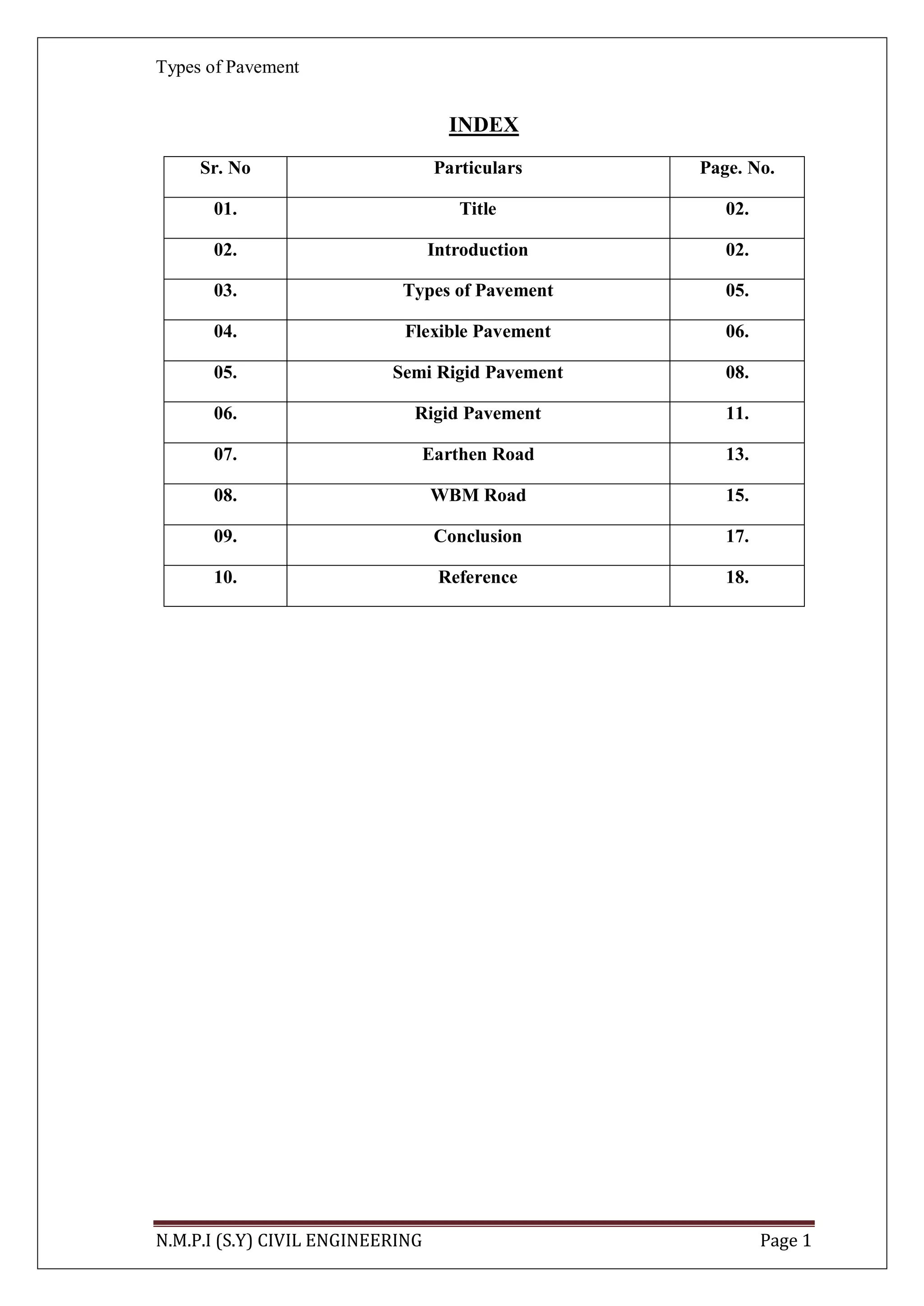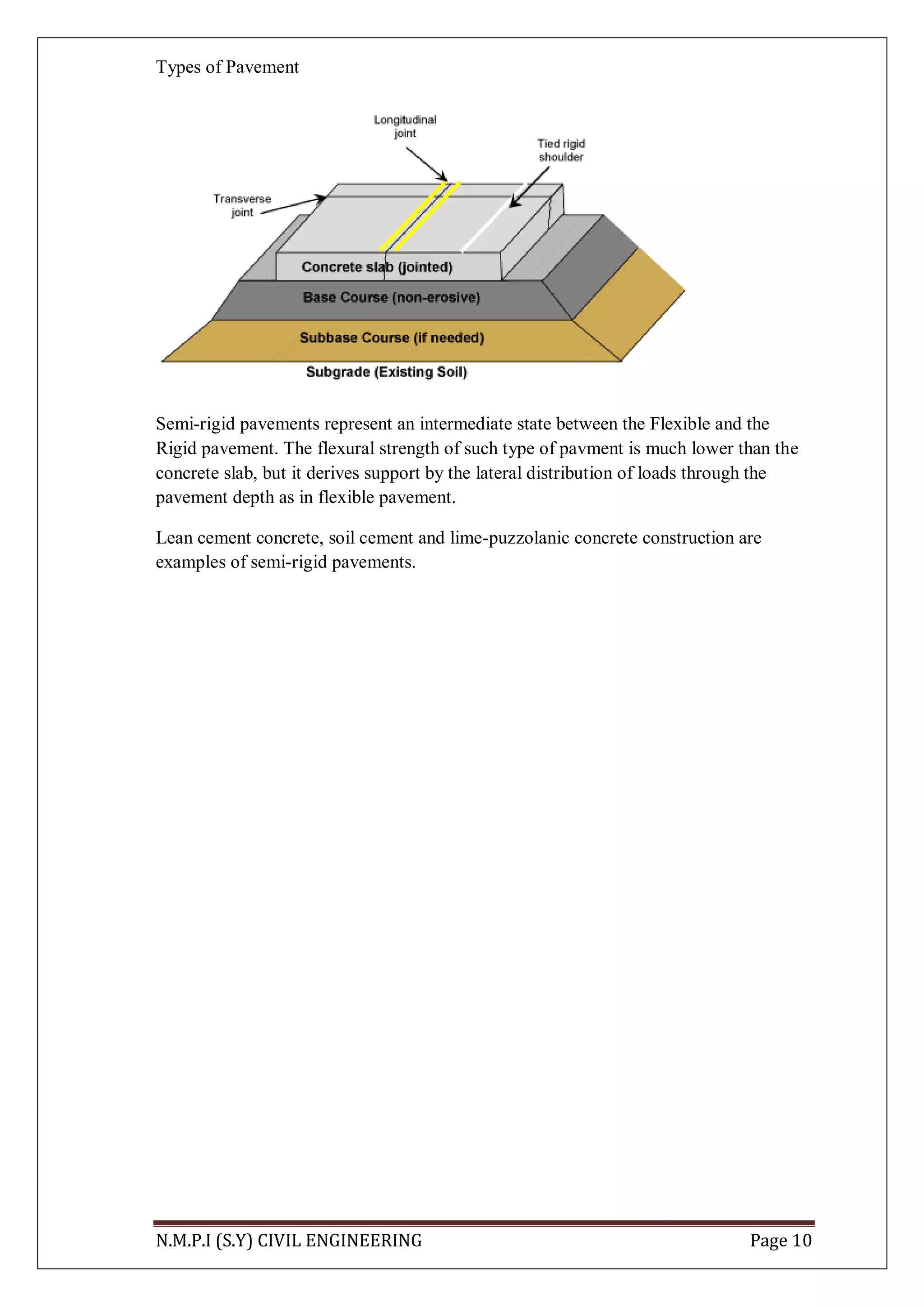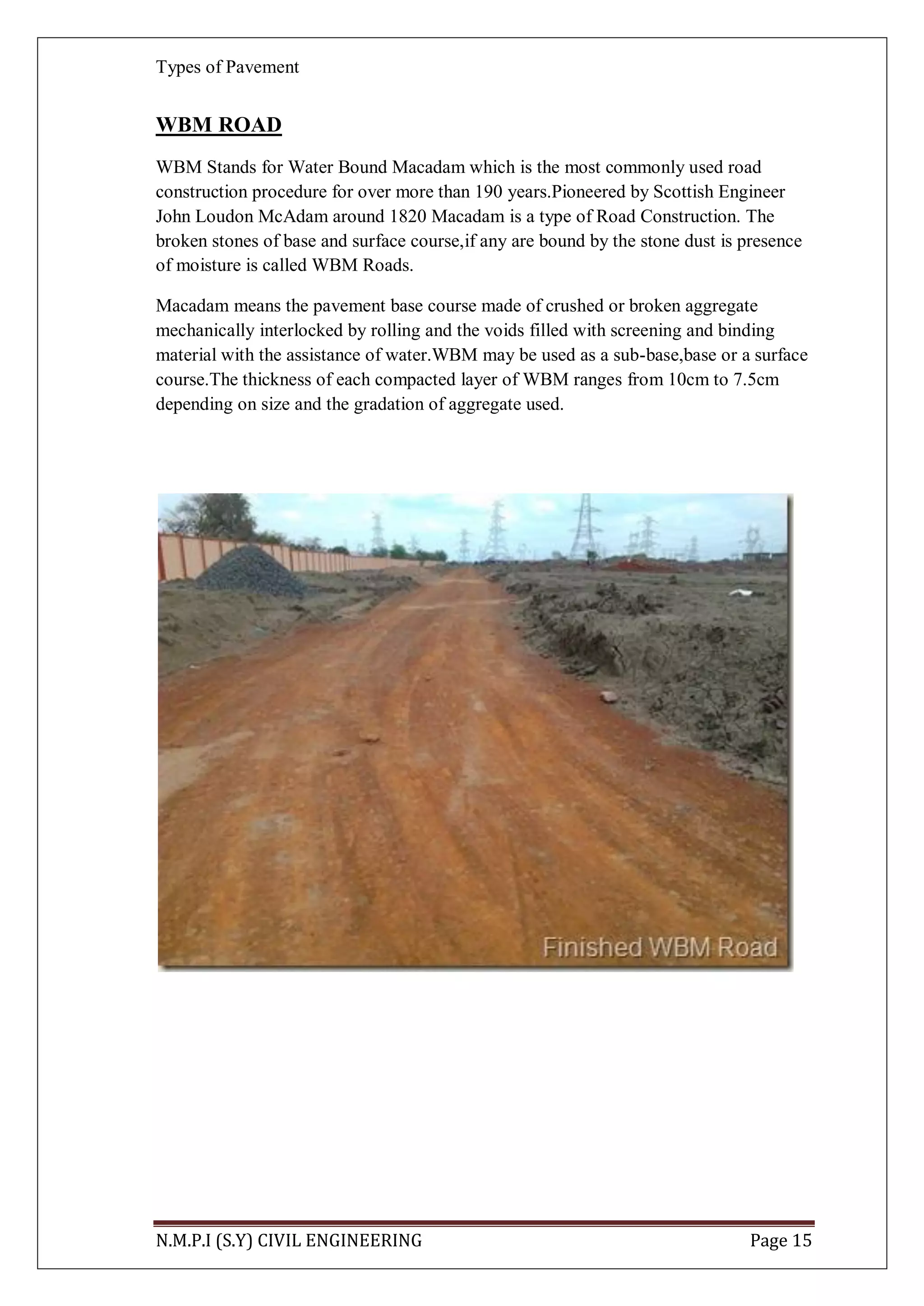The document discusses different types of pavements, including flexible, rigid, semi-rigid, earthen, and WBM (water bound macadam) roads. Flexible pavements are made of asphaltic or bituminous material mixed with aggregates. Rigid pavements are made of concrete and have higher initial costs but lower long-term maintenance costs. Semi-rigid pavements use materials like lean cement concrete or soil cement that provide some rigidity. Earthen roads are simply made from native soils and become muddy when wet. WBM roads involve compacting gravel layers with water.

















